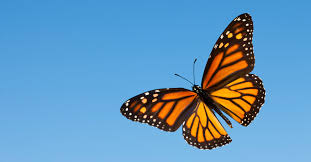The monarch butterfly is a wonderful creature with an amazing story. In late summer, monarchs in southern Canada and the U.S. northeast take flight, travelling over 5,000 kilometres to alpine forests in central Mexico. The overwintering butterflies cling to fir trees there in masses so dense that branches bow under their weight.
The monarch’s multigenerational journey northward is every bit as remarkable as the epic southern migration. Three or four successive generations fly to breeding grounds, lay eggs and perish. The resulting caterpillars transform into butterflies and then take on the next leg of the trip. Monarchs arriving in Canada in late summer are often fourth or fifth generation descendants of butterflies that flew south the previous year.
What may be the monarch’s most striking quirk is its caterpillars’ reliance on milkweed as its sole food source, a phenomenon called “monophagy”. Milkweed plants contain small traces of cardenolides, bitter chemicals monarchs store in their bodies to discourage predators, which associate the butterflies’ distinctive colouration with bad taste. But relying on a single type of plant for survival is a risky strategy that has put monarchs in grave danger.
In the mid-1990s, the eastern monarch population was more than one billion. In winter 2013, the population had dropped by more than 95 per cent to 35 million, with a modest increase to 56.5 million this past winter. As University of Guelph postdoctoral research fellow Tyler Flockhart notes, a single severe storm could extinguish the entire monarch population. A 2002 snowstorm wiped out 80 million butterflies. A similar trend has been occurring west of the Rockies, where the western population overwinters in California and migrates as far north as centralB.C.

